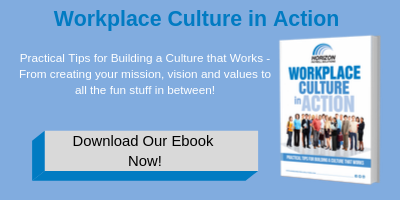4 min read
Employee Experience Underlies These 5 HR Topics to Watch in 2019
In 2019 improving employee experience will top many organizations’ to-do lists. When you think of the resources companies devote to studying and...
Expert payroll management services with a personal touch.
View Solution Read Guide HR Support
HR SupportSimplify and personalize HR with a team of HR experts on-demand.
View Solution Read Guide Time & Attendance
Time & AttendanceWhy spend more unnecessary time and money managing your workforce?
View Solution Read Guide Hiring & Onboarding
Hiring & OnboardingTurn your candidates into employees with hiring & onboarding solutions.
View Solution Read GuideAdd On Solutions automate everyday tasks, prevent mistakes, and simplify business compliance.
View SolutionHelpful downloads and eBooks to empower your business.
Helpful tax and HR alerts to help keep your business compliant.
Payroll and tax-related forms and documents.
Horizon's blog provides valuable insight into payroll, compliance, human resources, and more.
See our client success stories for a case study on how we can help your business.
Payroll and HR strategy requires intelligent technology, personal attention and specialized expertise in the needs and nuances of your business.
We provide payroll and tax processing services for businesses from 1 to 1,000 employees or more. Today, we have nearly 1,000 customers in 40 states.
What is Workplace Culture?
Rules are the formal procedures, policies and expectations your company creates. Often these are categorized in employee manuals or other official documents, and they illustrate how the company views itself as a business and an employer. Examples of written rules include your sick leave policy or dress code. You probably have unwritten rules too, like the proper way to answer the phone or the understanding not to discuss client details outside of the office.
Traditions often reflect the way a team works together and builds relationships. They can add to employees’ enjoyment at work and help them get to know each other outside of the work roles. Big and small examples include annual corporate picnics, signing a group card for coworkers’ birthdays, casual Fridays, and volunteer opportunities.
Personalities of employees at every level also contribute to culture. Clearly, the people who work for a company have different attitudes and experiences and these change the overall feel of an organization. Over time as employees come and go, the culture will change too. It’s important to remember to notice if stronger personalities seem to dominate at the expense of others. That can lead to feelings of preferential treatment, mistrust, or even harassment.
Culture develops organically, that is, it grows out of the rules, traditions and personalities in the company. But it can also be influenced by:
To assess the culture at your workplace you must take an objective, honest look at what’s going on around you at all levels and within all departments. You must note what you see (or do not see) as opposed to what you would like to see.
One way to do this is by making observations and taking notes. How do employees behave during meetings? Do they listen and take turns, or do a few people tend to dominate the conversation? Are new ideas welcomed for discussion or rejected quickly? How clear and regular is communication, in person or by email? Do all of your employees seem engaged? What management styles do you observe and how do they affect employees’ productivity and morale?
Surveys are another way to learn about perceived culture. While it sounds like an easy way to get feedback, there’s more to it than writing out some questions and emailing them to your staff. To obtain honest results and make the most of them, you have to commit time to all phases of a survey, including:
Another way is by talking with employees at all levels and stages of employment for their input. Include hourly and salaried employees, new hires, long-term employees, managers, administrative staff, decision makers, team leaders, part-timers, and others. You don’t have to interview every employee, but you do need to ensure that you have a mix of ages, genders, experience, races and ethnicities, and positions. The obvious influencers in your company are great to talk with, but be sure to provide an opportunity for the voices you hear from less often to be heard also. This will give you the fullest picture of the situation.
Remember not everyone perceives culture the same way. What might be light-hearted ribbing to one employee could be awkward or embarrassing to another. Maybe the admin staff is frustrated that others don’t clean up after themselves in the break area, and the task falls to them. Or, you might not have noticed that those at the company longest tend to steamroll over newer voices.
Don’t rush this process – it takes time for a dominant culture to develop and become visible, so take enough time to really understand what’s going on before you try to make changes.
If you'd like to learn more about how to improve the culture of your workplace download our Ebook on "Workplace Culture in Action".

4 min read
In 2019 improving employee experience will top many organizations’ to-do lists. When you think of the resources companies devote to studying and...

6 min read
As you wrap up 2018 and look ahead to 2019, be sure to check out these work-related, unofficial holidays. They can be a fun way to interact with...

4 min read
Congratulations! Your business has grown to 15 employees! Since your very first hires you’ve complied with labor laws like the Immigration Reform...